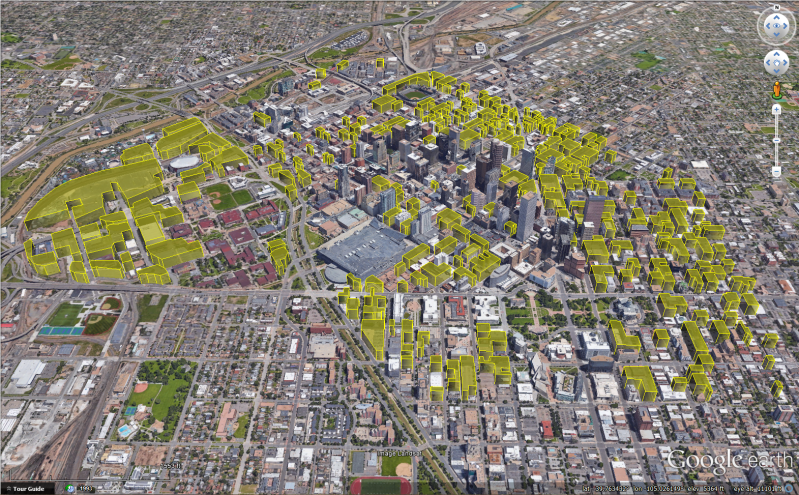Denver Warming to the Idea of Parking Maximums

One overlooked reason for the traffic swamping Denver streets is all the real estate we’ve set aside to accommodate parking. The city is rife with monolithic parking structures and asphalt lots that beckon to people with cars. All that parking creates a vicious cycle by degrading the pedestrian environment and generating traffic that slows down buses.
In most neighborhoods, city policies force developers to bake parking into their projects at a median cost of more than $17,000 per stall, which drives up housing prices for renters and homeowners. In downtown, though, developers build massive amounts of parking despite the absence of city-imposed requirements.
If Denver wants to have great transit and walkable streets, our parking obsession has to go. The city’s policy makers recognize this and are starting to get serious about reforming the status quo.
“I’d like to look at parking maximums,” Director of Transportation and Mobility Crissy Fanganello told the crowd at an Urban Land Institute of Colorado forum last week. The room was full of developers and people she called “city builders.”
With parking maximums, developers would devote less space to cars and make more room for housing, jobs, and commerce. Without parking maximums, the city’s investments in transit, biking, and walking won’t go as far as they should.
Take the rapidly developing neighborhood of River North, for example, where Fanganello says 11,000 parking spaces are in the pipeline. If all that parking gets built, the neighborhood’s streets will be saturated with curb cuts and overwhelmed with car traffic, and fewer people will choose to travel by other means.
“When you put in that many parking spaces and you don’t have the street network that can support the movement of that many vehicles, I worry that we’re not managing the expectations of people — that they’re gonna go to that neighborhood the same way that they’re visiting all the other neighborhoods in Denver — by car,” Fanganello said. “We’re really needing and asking that it have a different result. The built environment needs to adjust in order for us to be truly successful.”
The city’s internal conversations on parking maximums “are very preliminary,” Fanganello said, and are intertwined with other policy options like charging higher rates for on-street parking and ensuring newly built parking garages can be adapted for homes and other uses in the future.
It’s likely that parking maximums would be set on a neighborhood-by-neighborhood basis, not citywide, said Caryn Champine, director of planning services with Denver Community Planning and Development. One area would probably be selected on a trial basis before parking maximums are scaled up.
Fanganello says parking maximums would need buy-in from developers who rely on financing from banks, which sometimes see low parking counts as a financial risk.
And any parking maximum policy would also need approval by the Denver City Council. The council will have to develop the kind of policy leadership that was absent this summer, when council members ignored CPD’s recommendation and voted to require more parking in dense, urban contexts — even though a parking shortage did not exist.


